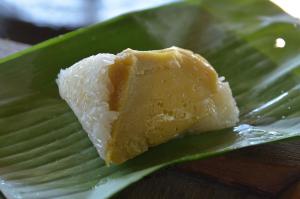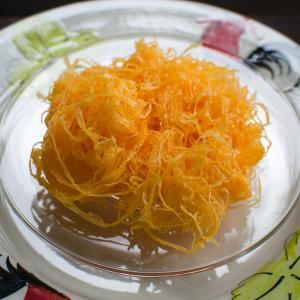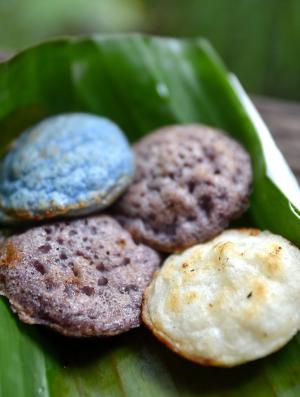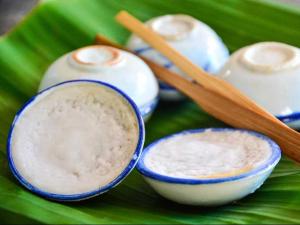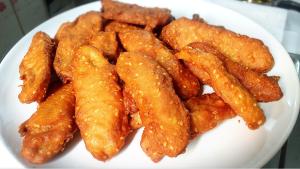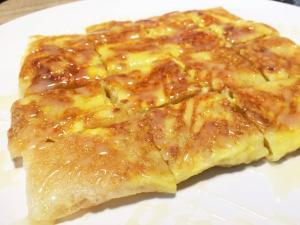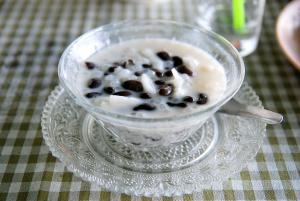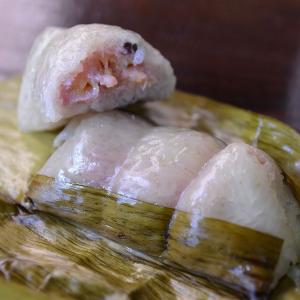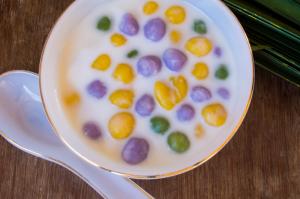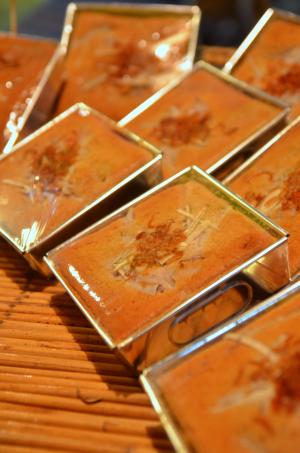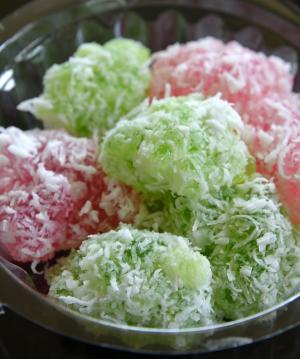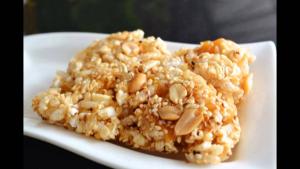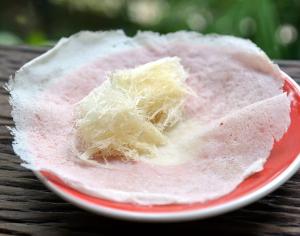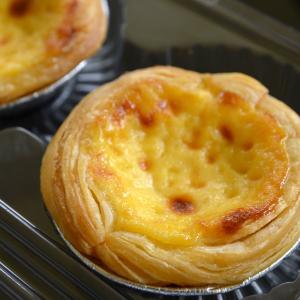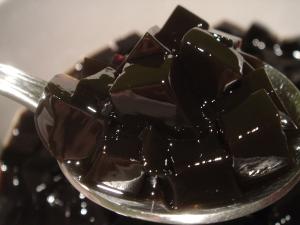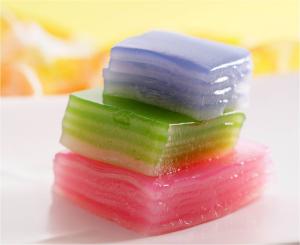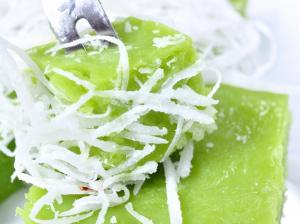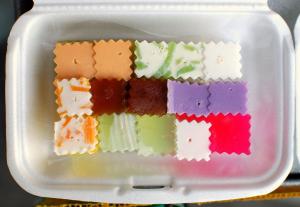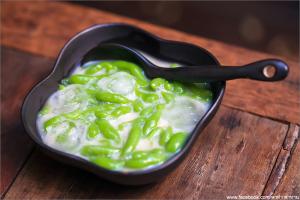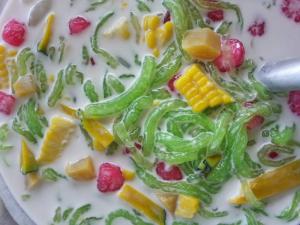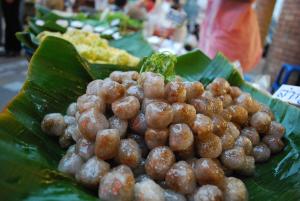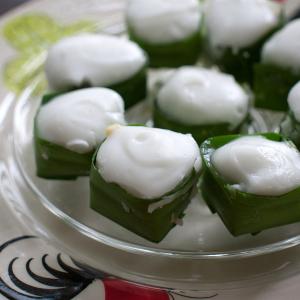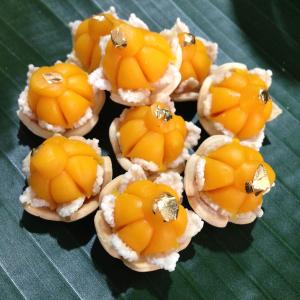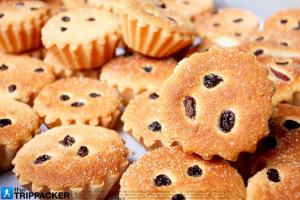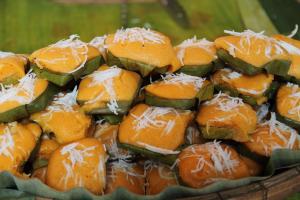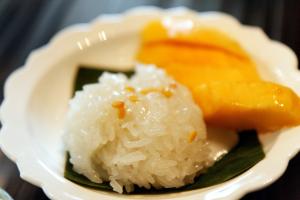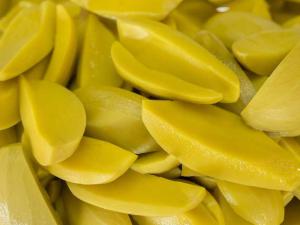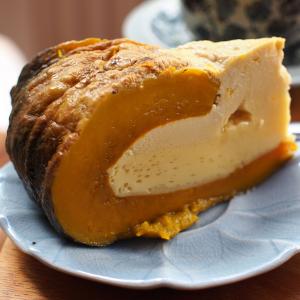Thai Sweets
Sticky rice served with an egg and coconut custard (coconut jam).
The name translates to "golden threads", it is a sweet snack or dessert of strings of egg yolk shortly boiled in sugar syrup. This, and other egg-based sweets such as sangkhaya, were introduced to the royal court of Ayutthaya by Maria Guyomar de Pinha in the 17th century CE.
Small coconut hotcakes with different fillings. These are made on a special cast-iron pan with indentations. Two halves are eventually stuck to one another to form the finished mini-pancake.
Sliced banana and a beaten egg are fried inside a thin sheet of dough, then cut and served with sweetened condensed milk and/or sugar.
Tapioca pearls and black beans (one of the vigna cultivars) with sweetened coconut milk and the flesh of a young coconut.
The dish is made by wrapping sweet banana and sticky rice inside a banana leaf and then steaming it. The banana takes on a pink colour after steaming.
Taro root mixed with flour into balls and served in coconut milk.
A sweet baked pudding containing coconut milk, eggs, palm sugar and flour, sprinkled with sweet fried onions.
These sweets are made by boiling balls of dough made from glutinous rice powder, coconut cream, grated coconut, sugar and flavourings, and then covering them with more grated coconut.
Wafers or chunks of rice candy with beans and sesame. Often prepared as an offering to the monks
An extremely sweet kind of candy floss/cotton candy which is wrapped inside small, thin pancakes.
Grass jelly is made from a herb from the mint family. It is often served with only shaved ice and brown sugar.
A multi-colored pudding of layers of sticky rice flour and tapioca flour mixed with coconut milk and sugar. Each layer will be differently scented (pandan, jasmine and more). It is similar to the Indonesian, Malaysian and Singaporean kueh lapis.
The unique smoky flavor and the deep black color comes from coconut ash. It is made from a mix of sticky rice flour and tapioca flour, together with coconut milk and sugar.
These are desserts made with an agar gelatine. The colours represent different flavours.
Pandan-flavoured rice flour noodles in sweetened coconut milk, similar to the Indonesian cendol.
A chilled sweet snack/dessert with a mix of ingredients, such as sweetened chestnuts, jackfruit, lotus root, tapioca, and lot chong, in sweetened coconut milk.
In Thailand tapioca balls with pork filling are call sakhu sai mu. Sakhu sai mu is a kind of snack which is very famous in Thailand and found at street stalls and markets. It is a dumpling which consists of a flour ball with a pork filling. Most people in Thailand eat it with khao kriap pak mo... more
Jasmine scented coconut pudding set in cups of fragrant pandan leaf.
Dara thong or thong ek krachang (ทองเอกกระจัง) is a golden dough ball made from wheat flour, egg yolks, coconut milk and sugar, topped with a little piece of gold leaf, and decorated with sugar-coated, dry-fried watermelon seeds. Nowadays, it is often wrongly referred to as cha mongkut (จ่ามงกุฎ... more
Small muffins. The main ingredients are duck eggs, sugar and wheat flour. No butter, milk or yeast. No preservatives. The little cakes are topped with raisins, gourds dipped in syrup, and persimmon.
Sticky rice cooked in sweetened thick coconut milk, served with slices of ripe mango.
Steamed pumpkin with an egg-and-coconut custard filling, similar to the coconut jam from Malaysia, Indonesia and the Philippines.
Thong yip is, like foi thong, made from egg yolks. The difference is that instead of being thread-like, thong yip are shaped like flowers.
